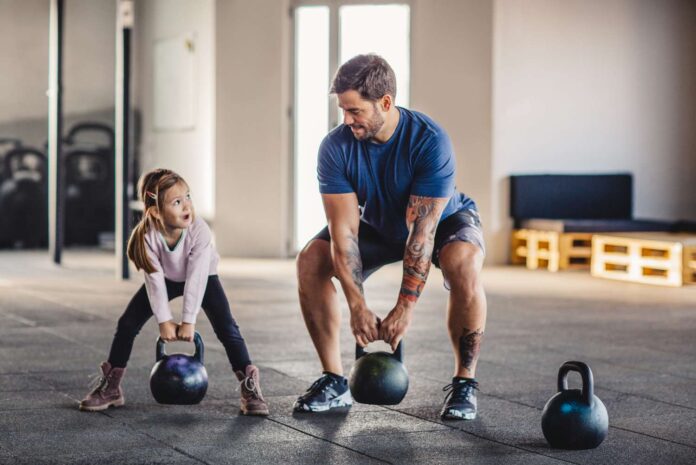Physical fitness stands as a cornerstone for maintaining optimal health and well-being, imperative for all age demographics. It not only shapes the body but also enriches the mind and soul, reducing risks associated with numerous health conditions.
However, a common query that often emerges is regarding the age prerequisites for gym attendance.
This post delves into the depth of age restrictions, offering insightful guidelines and invaluable tips, navigating through different gym chains, legal frameworks, and age-appropriate exercises.
Age Restrictions by Gym Chains

Gym chains, encompassing myriad policies, exhibit varied age requirements. It’s essential to consider popular chains like Planet Fitness, allowing 13-year-olds with parental consent, and LA Fitness admitting members aged 14 and above.
However, there are exceptions, such as special programs tailored for youngsters emphasizing age-appropriate fitness routines. Some gyms even host “Kid’s Clubs” providing a secured environment for children to stay active.
Legal Age for Gym Membership
Legal stipulations influence gym memberships significantly. Typically, the legal age for signing contracts is 18, impacting gym memberships as minors cannot enter binding agreements independently.
This scenario necessitates parental consent, instigating discussions on the implications of minors’ involvement in gym activities.
It’s vital for guardians to understand their responsibilities and the legalities involved, ensuring a smooth and compliant gym experience for the young enthusiasts.
Age-Appropriate Exercise Programs
Choosing appropriate exercise programs, you can find at any Colleyville gym, is vital for every age bracket to prevent injuries and promote overall well-being.
Children notably benefit from activities that integrate play, fostering enjoyment and physical development simultaneously. Teenagers, on the other hand, find moderate aerobic exercises most beneficial, aiding in their growth and development phase.
Adults require a balanced mix of strength, flexibility, and cardiovascular workouts to maintain health and vitality, and seniors find solace in low-impact exercises, reducing strain on joints.
Engaging in unsuitable exercises can lead to avoidable consequences, accentuating the necessity of thoughtful selection of fitness routines.
These routines should meticulously align with the specific needs, capabilities, and limitations intrinsic to different age groups, ensuring optimal health outcomes and minimizing risks.
Benefits of Starting Young

Inculcating an understanding and appreciation for physical wellness early on lays the foundation for a holistic and health-centered lifestyle.
Young individuals, when exposed to structured and supportive fitness environments, are inclined to adopt and sustain healthy habits, countering the ubiquitous sedentary lifestyles prevalent today.
The role of parents and guardians is paramount in this context, nurturing a positive disposition towards physical activities and instilling the values of regular workouts.
They are the catalysts who guide their children through the intricate realms of health and fitness, ensuring the assimilation of regular exercise as an integral component of daily life, setting the stage for lifelong wellness.
Tips for Teenagers
Teenagers venturing into gym environments necessitate structured guidance, supervision, and an emphasis on safety. The transition into adulthood brings a range of physiological changes, necessitating a balanced and well-rounded approach to physical development.
A blend of cardiovascular and strength training exercises is beneficial, fostering holistic development, provided they are congruent with individual fitness levels and goals.
This strategic approach ensures a harmonious and enriching interaction with fitness methodologies, laying a solid foundation for a future where well-being is prioritized and revered, aiding in their overall development and well-being.
Guidelines for Adults
Adults traversing through varied life stages should prioritize medical counsel before initiating fitness journeys to avoid undue complications.
This step is essential in discerning individual health status, potential risks, and appropriate fitness interventions, facilitating the formulation of realistic and achievable goals.
The pursuit of fitness for adults is not just a physical endeavor but also a psychological one, where motivation and clarity of purpose play critical roles.
Consistent efforts, coupled with clear, actionable goals, serve as the linchpins in realizing long-term health benefits, improving quality of life, and fostering resilience against age-related ailments.
Senior Fitness
Senior citizens embracing gym activities experience numerous benefits like improved mobility, enhanced mental well-being, and enriched quality of life.
Senior-friendly gyms with specialized classes and exercise modifications cater to the distinct needs and challenges faced by older adults.
These establishments are adept at providing environments conducive to the physical capabilities of the elderly.
Embracing fitness activities during the golden years is instrumental in maintaining independence, fostering a sense of accomplishment, and mitigating the onset of age-related health complications, contributing to holistic well-being and prolonged vitality.
Safety Measures for All Ages

Safety is universal and integral for all age groups engaging in physical activities. Recognizing and mitigating potential hazards is pivotal in fostering a secure workout environment.
Adequate warm-ups, cool-down sessions, and maintaining optimal hydration levels are fundamental aspects of any workout regime.
These measures are indispensable in minimizing injury risks and maximizing workout efficacy, ensuring that individuals can pursue their fitness goals with assurance and longevity, promoting a culture of well-being and proactive health management across the age spectrum.
Accommodations for Disabilities
The contemporary gym landscape, reflective of societal inclusivity, has evolved to provide extensive accommodations for individuals with disabilities.
The remarkable stories of individuals surmounting their physical limitations to attain their fitness aspirations underscore the indomitable human spirit and the transformative impact of consistent physical activity.
These narratives serve as beacons of inspiration, illuminating pathways for everyone, irrespective of their physical conditions, to explore and realize their fitness potential, fostering an inclusive and supportive fitness community.
The Role of Trainers and Instructors
Fitness trainers and instructors are the beacons guiding individuals through their fitness journeys.
Their profound knowledge and expertise significantly influence workout experiences, ensuring that individuals receive guidance that is well-suited to their unique needs and goals.
It’s crucial for trainers to possess accredited qualifications and certifications to provide reliable and effective guidance.
This assurance enables gym-goers to confidently embark on their fitness journeys, nurturing an environment that is enriching, supportive, and conducive to achieving individual fitness aspirations and holistic well-being.
Conclusion and Encouragement

Summing up, age, albeit a consideration, should not deter the pursuit of fitness.
It’s essential for individuals across the spectrum to prioritize health, utilizing the information and resources available to find suitable gyms and fitness programs.
The pursuit of a healthier and more active lifestyle is a rewarding endeavor, worth every drop of sweat.






